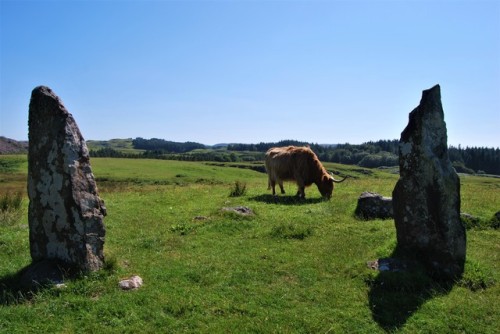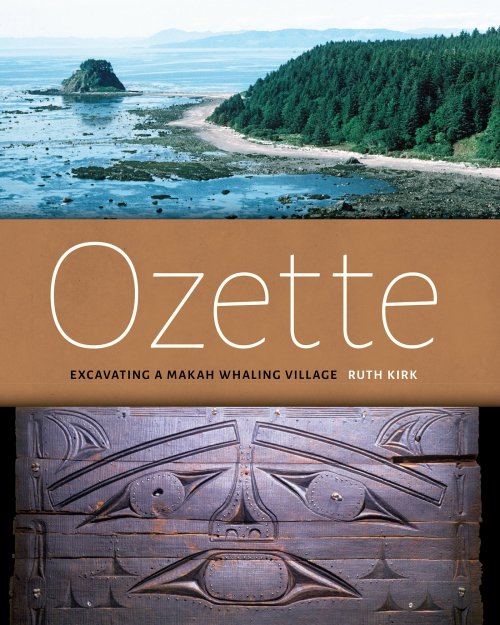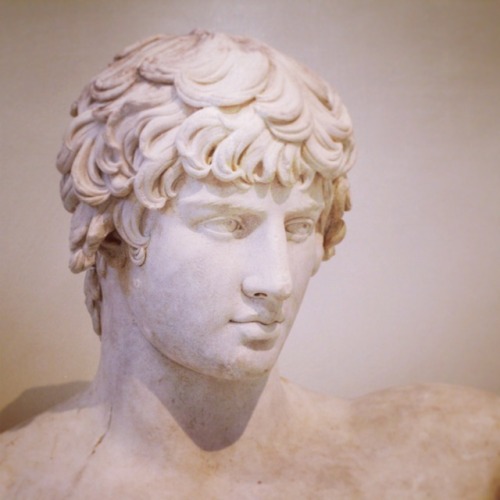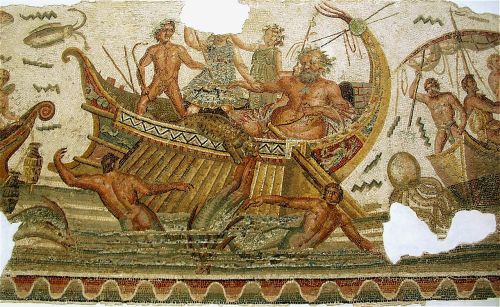#archaology
Glengorm standing stones, Isle of Mull, Scotland 2017
Three standing stones (around 2 metres high) occupy a commanding position on the end of a ridge in the broken ground to the west of Glengorm Castle. In the early 1880s only one of the stones was upright, but the other two had been re-erected by 1942. The stones are surrounded by a modern enclosure-bank and the packing-stones visible around the two re-erected stones are also of a recent date. The site was excavated as part of a four week survey of the stone alignments of northern Mull. The northernmost of the three stones appears to have been re-erected near its original position, while the southernmost stone has been dragged NE, to be wedged upright in a cleft in the bedrock. The original alignment did not repeat the trend of other sites in the area. Further conclusions await processing of the survey data.
The existence of a large mound of stones nearby was recorded in 1883, but it is no longer visible, and it is not clear from the description whether it was a prehistoric burial cairn or not.
Glengorm was originally known as Sorne. In 1850, the new landlord, one James Forsyth, began to ‘improve’ his estate in the usual fashion in the Highlands - by clearance. The main house was replaced by a large and imposing baronial 'castle’. Forsyth sought advice on a new name for the estate from one of the few remaining tenants of the land, an old lady, and she suggested Glengorm, meaning Blue Glen. Little did he suspect that the name would commemorate, for all time, the days when the glen was indeed blue with smoke from the burning homesteads.
Post link
New from University of Washington Press, Ozette: Excavating a Makah Whaling Village, by Ruth Kirk. The book is a comprehensive and highly readable account of this world-famous archaeological site and the hydraulic excavation of the mudslide that both demolished the houses and protected the objects inside from decay. Ruth Kirk was present, documenting the archaeological work from its beginning, and her firsthand knowledge of the people and efforts involved enrich her compelling story of discovery, fieldwork, and deepen our understanding of Makah cultural heritage.
Post link
Detail from Neptune and the Pirates (260 AD), mosaic from wealthy family’s villa at Thugga (Dougga) (Arabic: دقة) an ancient Roman city in northern Tunisia.
This work originates from the same peristyle as the Ulysses mosaic that I posted yesterday. It depicts the punishment of pirates on the Tyrrhenian Sea, merging themes linked to Dionysus and more common marine themes. The god is standing, ready to throw his spear. He is supported by a maenad, a satyr and aged Silenus, who is holding the ship’s rudder. A leopard is attacking one of the pirates, who are transformed into dolphins as soon as they recognize the divine nature of their adversary. To the left, genii have boarded another ship, while to the right, fishermen are attempting to catch an octopus with a net.
Both works can nowadays be seen at the National Bardo Museum:
Post link














